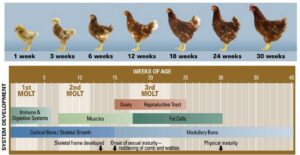Extinction is a natural process that has occurred throughout the history of life on our planet. However, the current rate of species extinction is far higher than the natural background rate, primarily due to human activities. Here are some key points about the extinction of species:
Thank you for reading. Don't forget to subscribe & share!
Natural Extinction: Throughout Earth’s history, many species have gone extinct due to natural factors such as changes in climate, geological events (e.g., volcanic eruptions), competition with other species, and diseases. These natural extinctions typically happen over long time scales, allowing ecosystems to adapt.
Human-Induced Extinction: Human activities have significantly accelerated the rate of species extinction. Some of the main human-induced causes of extinction include habitat destruction, overexploitation (e.g., overhunting or overfishing), introduction of invasive species, pollution, climate change, and habitat fragmentation.
Mass Extinctions: Earth has experienced several mass extinctions, where a large percentage of species on the planet went extinct in a relatively short period. The most famous of these is the Cretaceous-Paleogene (K-Pg) extinction event, which wiped out the dinosaurs and many other species around 66 million years ago. Human activities have raised concerns that we may be entering a new mass extinction event.
Biodiversity Loss: The loss of individual species is part of a broader issue of biodiversity loss. Biodiversity refers to the variety of life forms on Earth, including genetic diversity within species, species diversity, and ecosystem diversity. Loss of biodiversity can have cascading effects on ecosystems and can reduce the resilience of ecosystems to environmental changes.
Consequences: The extinction of a species can have profound ecological, economic, and ethical consequences. It can disrupt ecosystems, affecting the plants and animals that depend on the extinct species. It can also impact human activities, such as agriculture and fisheries. Additionally, many people believe that all species have intrinsic value and a right to exist, so the loss of a species can raise ethical concerns.
Conservation Efforts: Conservation organizations, governments, and individuals work to prevent the extinction of endangered and critically endangered species. Conservation efforts may include habitat protection, captive breeding programs, legal protections, and international agreements like CITES.
Preventing Extinction: While some extinctions are inevitable, concerted efforts to address the root causes of species decline can help prevent many extinctions. These efforts often involve protecting and restoring habitats, reducing pollution, regulating hunting and fishing, and mitigating climate change. It’s important to recognize that the loss of a species represents a permanent and irreversible loss of a unique form of life. Efforts to prevent extinctions and protect biodiversity are essential for the health of ecosystems and the well-being of all life on Earth, including humans.









